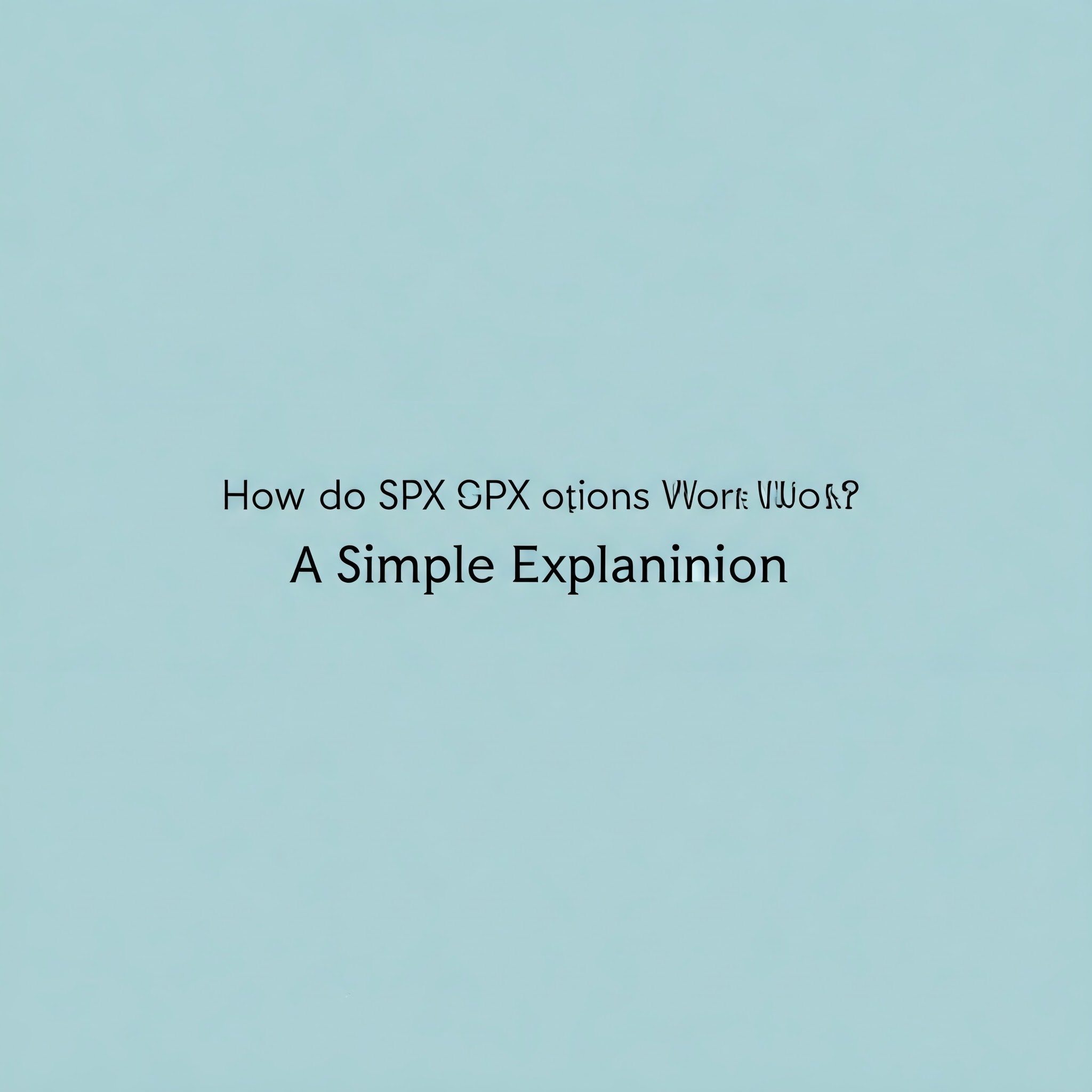Introduction
SPX options are a popular financial instrument for traders and investors looking to gain exposure to the S&P 500 Index, hedge their portfolios, or speculate on market movements. But how exactly do SPX options work? If you’re new to options trading, this guide will provide a simple and clear explanation of how SPX options function, their key features, and how you can use them in your trading strategy.
What Are SPX Options?
SPX options are financial derivatives based on the S&P 500 Index, a benchmark index representing the performance of 500 of the largest U.S. companies. These options allow traders to speculate on the future direction of the index or hedge their existing portfolios without directly owning the underlying stocks.
Key Features of SPX Options
- European-Style Options: SPX options can only be exercised at expiration, not before.
- Cash Settlement: SPX options are settled in cash, meaning no physical delivery of stocks occurs.
- Broad Market Exposure: SPX options provide exposure to a wide range of sectors and industries.
- High Liquidity: SPX options are highly liquid, making it easier to enter and exit positions.
How Do SPX Options Work?
SPX options come in two main types: call options and put options.
1. Call Options
A call option gives the buyer the right, but not the obligation, to buy the S&P 500 Index at a specific price (strike price) before the expiration date. Traders buy call options when they expect the index to rise.
Example:
- You buy a call option with a strike price of 4,500 and an expiration date one month from now.
- If the S&P 500 Index rises above 4,500 before expiration, you can exercise the option and profit from the difference between the index price and the strike price.
2. Put Options
A put option gives the buyer the right, but not the obligation, to sell the S&P 500 Index at a specific price before the expiration date. Traders buy put options when they expect the index to fall.
Example:
- You buy a put option with a strike price of 4,500 and an expiration date one month from now.
- If the S&P 500 Index falls below 4,500 before expiration, you can exercise the option and profit from the difference between the strike price and the index price.
Key Components of SPX Options
- Strike Price: The price at which the option can be exercised.
- Premium: The price paid to buy the option.
- Expiration Date: The date on which the option contract becomes invalid.
- Intrinsic Value: The difference between the index price and the strike price.
- Time Value: The portion of the premium that reflects the time remaining until expiration.
How Are SPX Options Settled?
SPX options are cash-settled, meaning no physical delivery of the underlying asset occurs. Instead, the profit or loss is settled in cash based on the difference between the index price and the strike price.
Example:
- You buy a call option with a strike price of 4,500, and the S&P 500 Index closes at 4,600 at expiration.
- The option is settled in cash, and you receive $100 (4,600 – 4,500) per contract.
Why Trade SPX Options?
- Diversification: SPX options provide exposure to a broad market index, reducing the risk associated with individual stocks.
- Hedging: Traders can use SPX options to protect their portfolios against market downturns.
- Leverage: Options allow traders to control a large position with a relatively small investment.
- Flexibility: SPX options can be used in a variety of strategies, from simple directional bets to complex spreads.
Risks of Trading SPX Options
While SPX options offer many benefits, they also come with risks:
- Volatility: The S&P 500 Index can be highly volatile, leading to significant price swings.
- Time Decay: Options lose value as they approach expiration, especially if the underlying index doesn’t move in the desired direction.
- Potential for Losses: Traders can lose their entire investment if the market moves against their position.
How to Get Started with SPX Options
- Educate Yourself: Learn the basics of options trading and how SPX options work.
- Choose a Broker: Select a broker that offers SPX options trading and provides the tools and resources you need.
- Develop a Strategy: Decide whether you want to trade calls, puts, or more complex strategies like spreads or straddles.
- Start Small: Begin with a small investment to minimize risk while you gain experience.
- Monitor the Market: Keep an eye on the S&P 500 Index and other market indicators that can impact your trades.
Popular SPX Options Strategies
- Long Call: Buy a call option if you expect the S&P 500 Index to rise.
- Long Put: Buy a put option if you expect the S&P 500 Index to fall.
- Covered Call: Sell a call option against an existing position to generate income.
- Protective Put: Buy a put option to hedge against a potential decline in your portfolio.
- Iron Condor: Use a combination of calls and puts to profit from low volatility.
Conclusion
SPX options are a powerful tool for traders and investors looking to gain exposure to the S&P 500 Index, hedge their portfolios, or speculate on market movements. By understanding how SPX options work, their key features, and the risks involved, you can make informed decisions and develop effective trading strategies.
Whether you’re a beginner or an experienced trader, SPX options provide a unique opportunity to participate in the financial markets. Start small, stay informed, and continuously refine your skills to maximize your chances of success.
How to Start Trading SPX Options: A Step-by-Step Guide
What Are SPX Options? A Comprehensive Guide for Beginners
Difference Between SPX Options and Other Options A Detailed Comparison
Key Terms in SPX Options You Need to Know: A Beginner’s Guide




